
Vol 92 No 37 - October 5, 2015
Snake Oil is Alive and Well
Presented By: Morton E. Tavel, M.D., Clinical Professor Emeritus of Medicine, IU School of Medicine
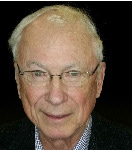
Dr. Morton
Tavel
Chinese laborers on railroad gangs building the first trancontinental railroad gave snake oil to
Europeans with joint pains. It was used before then by the Seneca people of New York and
Pennsylvania to rub on scrapes and cuts. It could be made from rattlesnakes but later came from
petroleum collected from oil seeps.
Now snake oil is an expression referring to any fraudulent health product or procedure. Since
1960 controlled clinical trials have been instituted to evaluate the efficacy of new drugs and
procedures by the Food and Drug Administration. Health problems can be approached by using
standard science-based treatments or alternative treatments.
Alternative treatments are outside the realm of conventional medicine and lack evidence of
clinical efficacy. These include chiropractice, acupuncture and faith healing among others. All are
unproven snake oil. Dietary supplements such as vitamins, minerals and herbs are also considered
treatments of unproven efficacy. Twenty percent of Americans use herbal products. Seventy five
percent use some form of alternative treatments. None of these have any effective oversight or proof
of safety.
Causes of continued use of snake oil or bogus treatments are a result of the placebo effect,
post hoc fallacy, anecdotal fallacy and pitches by medical charlatans.
The post hoc fallacy refers to the assumption that the effect which follows must certainly have
been caused by what preceded it, such as a common cold following being out in the rain.
Placebo effect refers to improvement after inactive treatment, unexplained by time or physical
factors. The effect is enhanced by verbal encouragement, physical contact, surgery and expensive
medicines. The placebo effect could in some cases be established in science by double-blind studies
etc. Keep in mind that most illnesses resolve spontaneously.
“Guru” charlatans create an illusion of validity. Their promotions rarely have any scientific
validity. The “Dr. Oz” show has 46% of statements supported by evidence, 15% contradicted and
24% inconclusive.
Fraudulent ads captioned with words such as ”amazing breakthrough,” ”secret formula” and
”proof by testimonials” are words to look out for, as well as the disclaimer “has not been evaluated by
the Food and Drug Administration” or “this product is not intended to diagnose, treat, cure, or prevent
disease.”
Notes by Jerry Kurlander
Vol 92 No 38 - October 12, 2015
Irrigation with Treated Municipal Wastewater in Indiana
Presented By: Anne Dare, PhD, Office of Global Engineering Programs, Purdue University
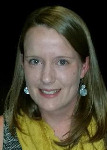
Anne Dare
Dr. Dare received her PhD from Purdue in the area of recycling treated municipal wastewater. Her
targeted countries were located in the Middle East and North Africa.
She began her presentation with definitions. Wastewater is the water that flows from a home,
industrial buildings or storm water. It may or may not include human or animal waste, chemicals and
other contaminates. It may be helpful in the growing of crops, if it contains nitrogen or phosphorus, or
it may be harmful to the crops or land if, for example, it contains heavy metals. Home produced
wastewater can be further divided into gray water, i.e.,water from the laundry, kitchen sink or bath,
verses water containing human waste from the toilet. Wastewater treatment is defined as a physical
or chemical process that removes contaminants from the water. Water treatment does not imply the
water has been disinfected.
Growing world population and the world’s improving standard of living is rapidly increasing the world
demand for the volume and uses of water. More developed countries have a higher per capita
demand for water than undeveloped areas.
Treated wastewater has many potential uses. Some of these are:
1. Landscape irrigation
2. Environmental services
3. Groundwater recharge
4. Industrial reuse
5. Agriculture
Considerations for whether or not treated water can be reused depend upon:
1. Physical factors – water quality, usage costs, treatment technology,
climate and proximity to sources
2. Social factors – psychological and religious factors
3. Policy – pricing, water quality standards, and allowable uses
4. Environmental factors – soil health, riparian and costal protection and groundwater
quality and recharge
5. Public health – farm worker safety and consumer safety
At this point Dr. Dare focused on her dissertation research. She points out that there is a coming
20% reduction in renewable water resources in the Middle East and North Africa – this is due to an
8% reduction in rainfall and a 12% increase in evapotranspiration. The current shortfall is
approximately 17% but this grows to 54% in the period 2014 to 2050. Currently there is no answer as
to how this gap will be filled. A partial solution would be to increase the treatment and reuse of
wastewater streams. In some cases this can be done but in some of the countries there are religious
restraints that will need to be relaxed in order to increase reuse.
Two successful examples are Singapore where 30% of their need is reclaimed from sewer water.
Another is Israel where 73% of all wastewater is used for irrigation.
Lastly she focused on Indiana. Since only 3% of Indiana cropland is irrigated, the use of retreated
water is very limited; especially since there are barriers in the minds of some consumers for
consumption of crops raised in retreated water.
Post Meeting Note: She was asked if she would have any hesitation on consuming crops raised on
retreated water. Her answer was a semi emphatic no.
Notes by Dick Garrett
Vol 92 No 39 - October 19, 2015
Tour of Caterpillar Diesel Engine Center, Lafayette, IN
Presented By: Bob Macorn, with tour guides Dave, Bill, and Mac

Caterpillar, Lafayette
Today’s tour was to the Caterpillar engine plant in Lafayette, Indiana. We were greeted at the door by Nick and given instructions pertaining to our visit. No cameras or notepads were allowed, and so these notes are from the memories of several members.
We were first given a lecture and slide show by Bob Macorn. Several facts about Caterpillar were shown. Caterpillar is a worldwide company with manufacturing facilities in many countries around the world. They employ about 114,000 people with perhaps another 200,000 employees associated with their suppliers. In addition, there are many others employed in sales franchises around the world and also employed in the maintenance of their equipment. We were shown a photo of a large truck which is 50 feet high and capable of carrying 500,000 pounds of material. These are usually employed in mining operations.
The Cat product line features more than 300 machines. This includes equipment such as articulated trucks, dozers, and pavers. Cat also manufactures attachments such as excavator buckets, backhoes, and compactors. The very large Lafayette plant we visited produces power systems. These systems provide power to customers around the world from North America to China, They power industries that drive economies such as agriculture, mining, drilling, production, well servicing, gas compression and power production. They power ships, data centers and hospitals. The systems vary in size from 5KW to 16000KW.
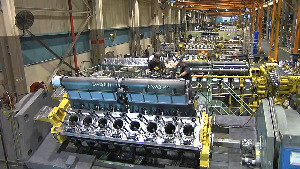
Caterpillar, Lafayette
Caterpillar has set 2020 as an operational goal to reduce its carbon footprint by 25% and to increase energy efficiency 25%. The Lafayette plant has been labeled an Endurance Facility. With three generators (C175, G3520, and G3516H) running, the Endurance Facility is producing 6.5 MW to 9 MW electrical base load demand required by the Lafayette Educational Complex. This self-generated power reduces electrical power purchases by $3.5 million. In addition, specialized exhaust treatment systems have been installed to maintain ultra-low nitrous oxide and carbon emissions that surpass federal and state standards. The total system fuel to electrical conversion is around 42 percent with the option to increase efficiency via recovery of waste heat in the future.
Next we were taken on a tour of the plant at which they make diesel and natural gas engines. Most of the engines that we saw were very large and had from 4 to 20 large (270 mm) cylinders. These were milled at the plant and assembled by robots and humans. The engine blocks were made elsewhere and sent for milling. The cam shafts came from Germany and were milled here. The painting operation was seen and was very interesting.
Business has been slow at the plant because of the marked decrease in the price of oil and thus oil drilling equipment.
Click HERE to see a video from the Caterpillar web site that covers much of the ground of our plant tour.
Notes by Gerald Kurlander
Vol 92 No 40 - October 26, 2015
University of Indianapolis Five Year Development Plan
Presented By: Dr. Robert Manuel
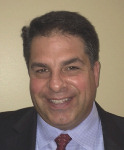
Dr. Robert
Manuel
Dr. Manuel is President of the University of Indianapolis.(UIndy). He joined UIndy in 2012 from Georgetown University where he was Associate Provost and Dean of the School of Continuing Studies. He has a BS from Allegheny, a Masters in Higher Education Admin from Syracuse and a PhD from NYU in Higher Education Admin. He is recognized for his work in innovative academic programming at the undergraduate, graduate, online, and custom educational levels. He has also worked with Senator Richard Luger to develop UIndy’s new Lugar Academy.
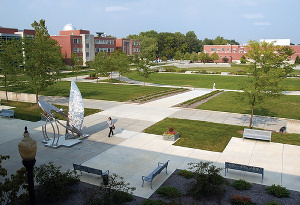
UIndy is a private university founded in 1902 and it adopted the name University of Indianapolis in
1986. It specializes in health sciences, business, nursing, and education offering undergraduate and
graduate degrees. It is located on more than 73 acres in southeast Indianapolis with an enrollment of
over 5400 students. It used to be a commuter campus, but has added residence facilities and now
85% of the students either live on campus or in the nearby community. 25% of the students are out
of state and all Indiana counties are represented.
Dr Manuel’s first order of business was to develop a new Strategic Plan. They started by doing a
study of how they and five other competitors were perceived. The dominant perceptions were small,
expensive, Indy, and good. Less perceived were downtown, private, and excellence. What was
hoped for, but not perceived, was growing and service.
Based on the perceptions, the Strategic Plan was developed to focus on two objectives: 1) service in
the immediate community and 2) financial viability in view of the state of higher education.
UIndy resides in the University Heights Neighborhood which is blue collar, poor, and underserved
medically with few healthy food choices. As such it qualifies for HUD redevelopment grants for
housing, medical services, and education. Unfortunately, the CDC (Community Development
Corporation) for this area folded so they had no voice in Indianapolis when HUD funds were
distributed. The Strategic Plan calls for UIndy to lead in the development of their immediate
neighborhood. UIndy has taken advantage of these HUD funds. They are actively acquiring property
adjacent/near the campus and have built facilities to serve the neighborhood. Community Health
Network rents space for a clinic that is free for neighborhood residents.
The second major focus of the Strategic Plan is to constructively deal with the state of higher
education. It is still true that a higher education is the best investment a young person can make, not
only financially, but to become a socially aware engaged citizen. Unfortunately, the current situation
is not uniformly positive. Higher education is perceived as overpriced with students leaving with high
levels of debt and entering a weak job market. Many are unable to find jobs with sufficient earning
power to repay their student loans. The average student who graduates does so with $28K in student
debt. Not only are students burdened, but also parents who you used home equity loans to fund their
children’s higher education. The Great Recession, with the loss of equity and earning power, affected
both generations. Many students start, take out loans, but don’t graduate. They have a worse
situation of debt without the earning power of a degree.
Another issue in the Midwest is that the number of High School graduates is forecast to be flat or
declining for the at least the next decade. With fixed costs, declining enrollment forces exaggerated
tuition increases and/or services cutbacks.
It is with this backdrop that the Strategic Plan must seek financial viability. Since adoption in 2014, the
Strategic Plan has started to be implemented and has already shown benefit.
On Objective 1, community service, UIndy is focusing not only on its immediate neighborhood, but on
a 5 mile radius to be a Community Anchor. As mentioned above, it is acquiring local properties and
dedicating many to community services. A 1.5 mi health loop, around campus and through the
neighborhood has been built for use by the students and the neighborhood. UIndy is a major actor
economically with $36M of its $110M budget spent on goods and services. The Plan earmarks as
much as possible for Marion County ($23M in most recent budget). In addition, 7 local businesses
have opened facilities or extended access to the UIndy campus, further integrating UIndy into the
larger Indianapolis community.
On Objective 2, dealing with the state of higher education, UIndy is distinguishing itself from
competitors in several ways. One is focusing on high touch education, that is emphasizing
constructive interaction between students and faculty as a key aspect of learning which is less
available either in online or larger academic facilities. UIndy has improved the student to faculty ratio
from 15:1 3 yrs ago to 11:1 while increasing enrollment. Another distinguishing initiative is the
implementation of Lacrosse, which has enrolled 56 athletes, 54 from out of state, generating positive
net revenue in the process.
Directly on the financial side, the Champions Challenge has raised $34M of the $50M goal in its first
three years. The number of donors has risen from 4300 to 5100.
Thanks to Dr. Manuel for an engaging presentation.
Notes by John Peer
Vol 92 No 41 - November 2, 2015
Opportunity and Challenges of Commercializing Academic Innovation
Presented By: Dr. Jaipal Singh, PhD, Director of Academic-Industry Collaboration and Visiting Professor at Indiana University School of Medicine
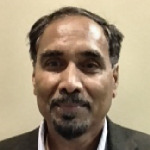
Dr. Jaipal
Singh
Dr. Singh started out by showing that health care spending continues to increase each year,
projected to reach 20% of GDP by 2025. He showed data demonstrating that use of pharmaceuticals
reduces the need for avoidable medical care, resulting in significant reductions in overall medical
spending. The bulk of research that could lead to new medicines is in academia, while the bulk of
spending to translate (develop) basic discoveries into new medicines is carried out by drug
companies. However, academia and drug companies generally operate separately without
meaningful collaboration. This results in the “Valley of Death” whereby innovations that have the
potential to become new drugs remain on the bench and fail to reach the bedside.
Recent developments have compelled academia and drug companies to change their standard
modes of operation toward increasing collaboration. Academic funding from the National Institutes of
Health, when adjusted for inflation, has decreased since 2003. On the other hand, drug companies
are beset by higher cost of development, decreased new product pipelines, loss of patents and
revenues, and diminished internal innovation. These drivers have led to adoption of an open
innovation model that leverages external organizations such as academia to support innovation and
even product development. As evidence of this trend, Dr. Singh provided multiple examples from
recent years of significant collaborations between drug companies and academic research centers.
Despite these trends, there remain significant challenges for productive and sustainable collaboration.
Academic research is driven by rapid publication and dissemination of novel findings, while drug
company innovation is more tightly withheld in patents and trade secrets due to their motivation for
profits. Consequently, with these substantive differences there remains a significant need to “Bridge
the Divide” between academic and industrial research.
So what is Indiana University School of Medicine (IUSM) doing to “Bridge the Divide?” First, an
Industry Collaboration Portal (ICP) has been established, the mission of which is to catalyze
academic-industry partnerships and entrepreneurship by leveraging innovations, synergies and
unique capabilities of Industry and IUSM. An Executive Team and External Advisory Board have
been assembled to identify and nurture specific collaborations with drug and device companies within
and beyond Indiana borders, examples of which include Zimmer Biomet, Cook, Lilly, Roche, and
Astra Zeneca. Second, IUSM is creating further incentive for its researchers by providing
translational research funding. Third, The Indiana Center for Biomedical Innovation (ICBI) has been
created at IUSM to provide “incubator” facilities for new start-up companies based on IUSM
discoveries. Finally, a team of technical and business advisers has been assembled to help identify
promising new start-up companies for ICBI, and to provide guidance and advice to these fledgling
companies along their development path.
Dr. Singh ended his presentation with an invitation for Scientech members to get involved in these
entrepreneurial efforts. Toward that end he provided his contact information (Singh52@iupui.edu)
and a link to the Industry Collaboration Portal: https://icp.medicine.iu.edu/.
The Power Point slides in Dr. Singh’s presentation may be seen at https://flic.kr/s/aHskk9WAKF for those interested in a deeper dive
into these topics.(Note: Click on any slide thumbnail to see a full-size version. Then use the > icon on the right side of the screen to move to the next slide)
Notes by Leah McConaghy and Ray Kauffman
Vol 92 No 42 - November 9, 2015
Music by The New Horizons Swing Band
Presented By: Sam Rhinesmith, longtime Director of North Central High School Bands
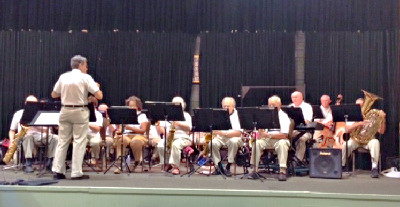
New Horizon Swing Band
The New Horizons Swing Band is a subgroup of the New Horizons Band of Indianapolis that is
directed by Sam Rhinesmith. He was playing trombone, today. Sam was the long time director of
North Central High School Bands. The members of the ensemble have diverse backgrounds except
for a common urge to play music.
For all of those veterans that have served or are serving our country in the military, we all offer a
salute with grateful thanks and praise. We also invited the Service Club that meets at the same time
in a neighboring room, to join us for this Veterans Salute presentation. It was an honor for that large
group to join with us, today.
The assistant director and leader of today’s Swing Band is Al Spangler. Al taught at Speedway High
School. This band has been in existence 20 years and has a general membership of about 65
players. Eighteen band member players were involved in today’s Veterans Day Salute Tribute.
New Horizons Swing Band’s Veterans Salute presentation featured patriotic, military, as well as "Big
Band" numbers from the '30s and '40s. The highly enjoyable program was about 45 minutes in length.
This program has also been used as part of the Veterans "Honor Flight" initiative. In addition to being
a musical tribute to veterans, its relevance to the Scientech Club also emphasizes and illustrates that
music is applied mathematics.
A series of pictures taken by John Morrical during the New Horizons presentation may be seen at https://flic.kr/s/aHsknXv32T. (Note: Click on any slide thumbnail to see a full-size version. Then use the > icon on the right side of the screen to move to the next slide)
Notes by Dick Carter
Vol 92 No 43 - November 16, 2015
Recent Findings about the Universe, Planets and Solar System
Presented By: Gregory R. McCauley, CEO – Link Observatory – Space Science Institute
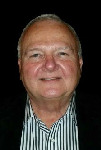
Greg McCauley
The Link Observatory and Space Science Institute was formed in 2012 at the home of the Link
Observatory in Martinsville, IN. Mr. McCauley and Mr. Williams provide educational programs to the
community to foster interest in science. His program today will be given 100 times this coming
weekend. This program as well as others is part of the mission of Link. Their mission is to stimulate
an interest in astronomy and space exploration, foster scientific curiosity, and advance science
literacy to cultivate and nurture the next generation of science, technology and academic leaders.
Programs include science education, science programs and public engagement programs.
New Horizons, the first mission to the Pluto System and the Kuiper Belt, was launched on
Jan. 19, 2006 by a Delta 4 rocket. This rocket was the fastest rocket ever to leave the earth. The
distance to Pluto, now not called a planet, is 3.2 billion miles from the earth, and the Delta 4 traveled
at 35,000 mph to reach Pluto. At 35,000 mph you can travel between NYC and LA in five minutes.
The total time to Pluto was 9.5 years.
The New Horizons space craft is powered by a nuclear power source providing 2500 watts of
heat energy that is converted to 800 watts of electrical energy. In 30 years the power will be reduced
to 200 watts at 60 volts. The spacecraft weighs 1300 lbs. The antenna used to send data back to
earth is 82 inches in diameter. Three receiving sites, located in the USA, Spain, and Australia, collect
the data on 1.2 GHz at a data rate of 2 Kbs. The pass-by of Pluto in just a few minutes produced 16
months of data that will be sent back to the earth.
A team approach was used on the New Horizons project. The principle investigator was
Dr. Alan Stern of Southwest Research Institute, whose job was to lead the mission team. John
Hopkins of University Applied Physics Laboratory managed the mission for NASA, and designed, built
and operated the space craft. John Hopkins is responsible for science payload operations, and data
reduction and archiving. Many other organizations were also part of the mission team.
The New Horizons space craft reached Pluto on July 14, 2015, and flew by Pluto going 35,000
miles per hour. During this time the science payload made up of seven devices captured data and
pictures of Pluto. The speaker provided still pictures of the face, showing the surface full of mountains
of frozen methane and nitrogen. It is felt that frozen salt water is under the surface of Pluto. This
data was obtained by “Ralph,” a visible and infrared imager/spectrometer, “Alice,” an ultraviolet
imaging spectrometer, “REX” measuring atmospheric composition, “Lorri,” a telescopic camera,
“SWAP,” a solar wind and plasma spectrometer, “Pepssi,” an energetic particle spectrometer, and
“VBSDC,” built and operated by the students of the University of Colorado, measuring space dust.
The speaker used an excellent video to show how the New Horizons space craft was a
success. This venture into space was extremely successful and shows the quality of the science staff
at NASA and educational institutions in the USA.
A copy of the Power Point slides used in this presentation may be seen at https://flic.kr/s/aHskoj7rNv. (Note: Click on any slide thumbnail to see a full-size version. Then use the > icon on the right side of the screen to move to the next slide)
A number of videos related to the New Horizons Pluto mission may be seen at http://www.nasa.gov/mission_pages/newhorizons/videos/index.html .
Notes by Hank Wolfla
Vol 92 No 44 - November 23, 2015
Indianapolis War Memorials
Presented By: Brig. Gen. (Ret.) J. Stewart Goodwin
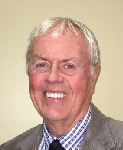
Gen. Stewart
Goodwin
Brig. Gen. Goodwin is the Executive Director of the Indianapolis War Memorials. He supervises the
maintenance and the history of the monuments. In addition, he is Assistant Adjutant General of the
Air National Guard, whose HQ is Indianapolis. The Indiana Air National Guard consists of the 122nd
Fighter Wing in Ft. Wayne, the 181st Intelligence Wing in Terre Haute, Atterbury Air-to-Ground
Gunnery Range in Edinburgh, Jefferson Air-to-Ground Gunnery Range in Madison and the 207th
Weather Flight in Indianapolis.
General Goodwin received a B.S. in Mechanical Engineering from the University of Evansville in 1971
and a M.S. in Industrial Safety from Central Missouri State University in 1975. He also studied at the
Air War College. He is in charge of 24 acres of monuments and parks in downtown Indianapolis.
Indianapolis has more Veterans Monuments than any other State and is second only to Washington
D.C. There are 41 monuments, and number 42 will be built in Speedway. Gen. Goodwin frequently
speaks to Veterans groups.
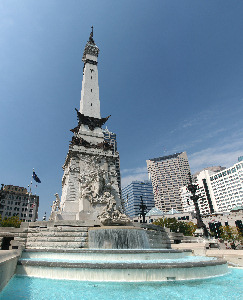
Soldiers & Sailors
Monument
The Soldiers and Sailors Monument was built from 1889-1901. It honored men from the Mexican War, the Civil War and the Spanish-American War. 10% of the Union Army was comprised of soldiers from Indiana, which had the second largest per capita number of soldiers next to Delaware.
Three of four men of eligible age in Indiana served in the Civil War. Indiana is the 14th largest State but it has the fourth largest National Guard. Lady Victory was refurbished in 2009. It was removed and strengthened. Its supports had been corroded and it was in jeopardy of falling. It weighs 20,600 pounds. At 284.5 feet tall, it is the largest Civil War Monument. The Monument is built from Indiana limestone and has two fountains and four figures. Later the long beards of the soldiers, designed by the German Bruno Schmitz, were thought to be too long and were shaved down.
The Indiana World War Memorial was planned in 1920 at a special session of the State Congress. Two million dollars (a gallon of milk then cost 5 cents) was spent to honor the 135,000 American men who served in WW I, of which 3,000 died. A total of ten million soldiers were casualties, as well as six million civilians. (In addition, 50 million people worldwide died of the 1918-1919 influenza epidemic.) A two-block section of downtown Indianapolis was chosen. The Memorial was modeled after the Mausoleum at Halicarnassus, one of the ancient wonders of the world. The cornerstone was laid by Gen. John Pershing on 4 July 1927.
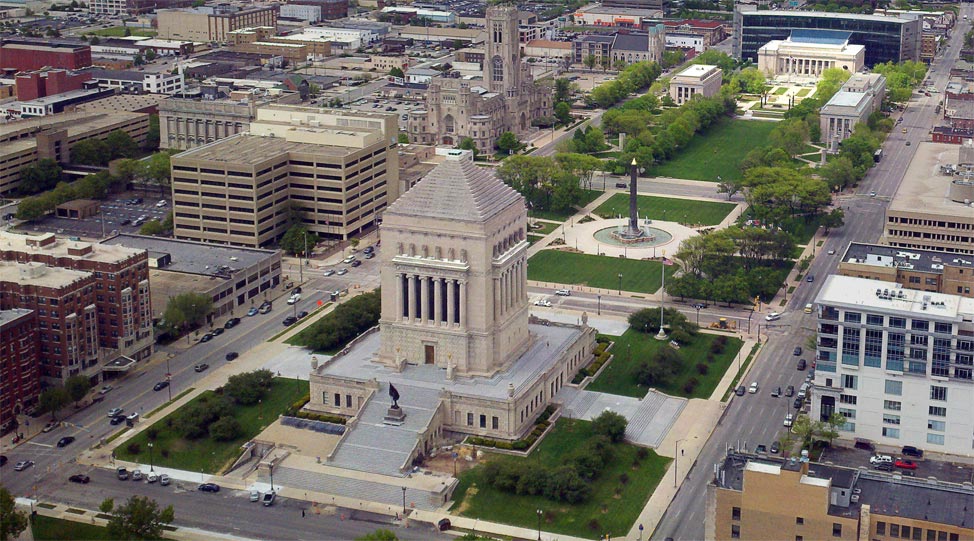
Memorial Plaza
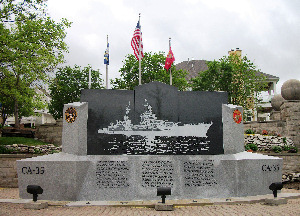
USS Indianapolis
Memorial
Gen. Goodwin thanked the veterans for their military service which benefits all Americans. He announced the “Bricks of Honor” program which will place engraved bricks to encircle the Soldiers and Sailors Monument. Bricks may be purchased for $100 each (tax deductible) and will include the name of the veteran, the branch of the service with the years served. It will honor the fine men and women who have been guardians of our freedom.
Further information on the Indianapolis War Memorials may be found at http://www.indianawarmemorials.org/
Notes by Bill Dick
Vol 92 No 45 - November 30, 2015
Wabash River Watershed Project
Presented By: Mary McConnell, State Director, Indiana Chapter of the Nature Conservancy
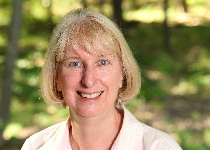
Mary McConnell
Today’s talk was by Mary McConnell who discussed the Indiana Nature Conservancy. She focused on the Wabash River watershed and conservation efforts underway to protect the health of the river, the land it drains, and even the Gulf of Mexico into which it eventually flows via the Ohio and Mississippi Rivers.

The Mississippi River drains from 31 states. The Wabash has the longest stretch of undammed river east of the Mississippi, 411 miles. There are numerous species of fresh water mussels in the Wabash and its tributaries, many of which are endangered. Most of the sediments in rivers come from ditch failures. The relatively new concept of terraced drainage ditches prevents most of the soil erosion. Along with the soil that runs into the rivers, and the agricultural nitrogen which is a serious pollutant. 2% of the water in the Gulf comes from the Wabash but 12% of the nitrogen does.
The Nature Conservancy opposes the proposed reservoir in Anderson for numerous reasons. The Goose Pond area in Green County is a prime example of the good that comes from returning land to its natural state.
Notes by Jim Dashiell
Vol 92 No 46 - December 7, 2015
Recovering Life Together: Social Practice Theory and the Clubhouse Model of Psycho-Social Rehabilitation
Presented By: Jay Brubaker, Executive Director, Circle City Clubhouse
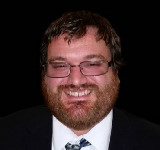
Jay Brubaker

Jay Brubaker is the Executive Director of Circle City Clubhouse ("CCC"), a non-profit
organization dedicated to supporting the recovery and wellness of persons who have mental
illnesses. Jay is himself a "recovering attorney." CCC is funded primarily through private donations.
Jay introduced Sevella, who is a resident of CCC. Sevella described CCC as a place where
she is trusted and can trust others to treat her as a real person, not someone who is a problem.
The structure of CCC is designed to need the help of members to function. It is intentionally
understaffed so that, to work, members must contribute to operations with staff. There is no special
space set aside for staff. The facility's space is open equally to staff and members. Operational
decisions are made by consensus, not by staff or majority vote. (BTW, this is a model developed by
Quakers 350 years ago.) CCC is free and open to all members of the community who have mental
illness. Members are asked to contribute $2.00 to help pay for lunch.
Providing the kind of community support that CCC offers to the mentally ill is helpful to the
psychological wellbeing of individuals, but also because it addresses an important social need.
According to Brubaker, the lives of 1 in 4 persons worldwide are affected by mental illness. One
million people die from suicide every year, more than homicide or war. Only 5% of healthcare dollars
spent in the U.S. go toward mental health treatment; 89.3 million Americans live in areas where there
is a shortage of mental healthcare professionals.
On the other hand, there is a common misunderstanding about the danger of folks with mental
illness. Fewer than 3.5% of violent crimes are committed by the mentally ill. But, a person with
mental illness is twice as likely to be the victim of a violent crime than a member of the general public.
Mental illness is a leading cause of homelessness, unemployment, alienation from family and a
personal sense of worthlessness.
An alternative to incarceration and hospitalization to help treat mental illness was developed in
the late 1940s, which was the Clubhouse Model. In 1989, standards for "Clubhouses" were
developed. The essential mission of the Clubhouse Model is to help the mentally ill reclaim their
identity as a person of worth. CCC opened its doors in February of this year to offer this opportunity
to members of the Indianapolis community.
(Read more at www.centralindianaclubhouse)
Notes by Jeff Rasley
Vol 92 No 47 - December 14, 2015
Teaching STEM in IPS
Presented By: Robert Shula, Director, IPS Foundation, and Ben Carter, Director of Technical Education, Arsenal Technical High School
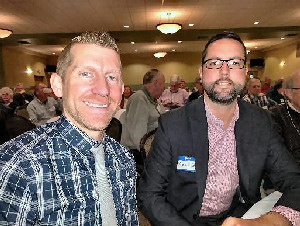
Ben Carter, left
and
Robert Shula, right
Mr. Robert Shula, Director of the IPS Foundation started the talk by extending his gratitude to The Scientech Foundation for its financial support in scholarships for IPS students. He indicated that there is a high demand for employees with STEM skills now and this will continue in the future. He gave a short history of the IPS Foundation, which was created 32 years ago with the mission of acquiring additional monies to fund public education in the Indianapolis Public School system. He said 85% of the 30,000 public school students are under privileged and in need of support to become productive members of the community.
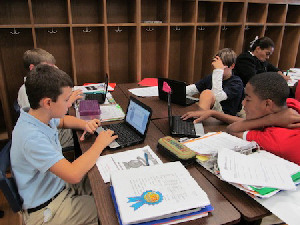
Mr. Carter then showed two video clips of the center in action. The first clip showed a 3-D printer making name tags in their Maker Space using advanced software. He told of partnerships with Nex Tech (for acquiring 3D printers) and the IUPUI School of Informatics and Computing which contributed graduate students and faculty to mentor his students with the hope that they would graduate with college credits and go on to careers in the STEM areas. The civil engineering programs teach design and architecture with help from local engineers and architects.
The meeting was closed with the revelation of a student named Gabriela, a recipient of a Scientech Scholarship, who is enrolled in IUPUI, and is the first in her family to go to college. She received encouragement and request for more involvement of Scientech member in this noble endeavor.
Notes by Gonz Chua